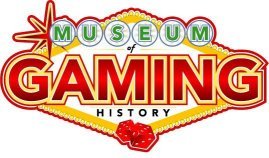|
|
|

Real estate businessman Walter O'Malley had acquired majority ownership of the Dodgers in 1950, when he bought the shares of his co-owners, the estate of the late John L. Smith and Branch Rickey. Before long he was working to buy new land in Brooklyn to build a more accessible and better arrayed ballpark than Ebbets Field. Beloved as it was, Ebbets Field had grown old and was not well served by infrastructure, to the point where the Dodgers could not sell the park out even in the heat of a pennant race (despite largely dominating the league from 1946 to 1957).
New York City Construction Coordinator Robert Moses, however, sought to force O'Malley into using a site in Flushing Meadows, Queens the site for what eventually became Shea Stadium. Moses' vision involved a city-built, city-owned park, which was greatly at odds with O'Malley's real-estate savvy. When it became clear to O'Malley that he was not going to be allowed to buy any suitable land in Brooklyn, he began thinking elsewhere.
Meanwhile, non-stop transcontinental air travel had become routine during the years since the Second World War, and teams were no longer bound by much slower railroad timetables. Because of these transportation advances, it became possible to locate teams further apart – as far west as California – while maintaining the same game schedules.
When Los Angeles officials attended the 1955 World Series looking to entice a team to move to the City of Angels, they were not even thinking of the Dodgers. Their original target had been the lowly Washington Senators (who would in fact move to Minneapolis to become the Minnesota Twins in 1961). At the same time, O'Malley was looking for a contingency in case Moses and other New York politicians refused to let him build the Brooklyn stadium he wanted, and sent word to the Los Angeles officials that he was interested in talking. Los Angeles offered him what New York would not: a chance to buy land suitable for building a ballpark.
Meanwhile, Giants owner Horace Stoneham was having similar difficulty finding a replacement for his team's antiquated home stadium, the Polo Grounds. Stoneham was considering moving the Giants to Minneapolis, but was persuaded instead to move them to San Francisco, ensuring that the Dodgers would have a National League rival closer than St. Louis. So the two arch-rival teams, the Dodgers and Giants, moved out to the West Coast together after the 1957 season.

|
|